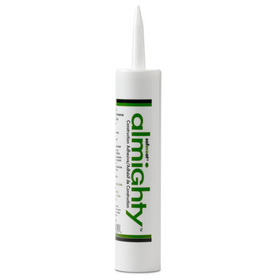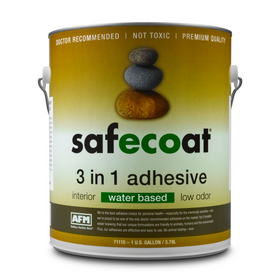
Passive House Retrofits: The EnerPHit Program
Last Updated: Feb 23, 2025One of the most common sayings in the green and sustainable housing industry is: "the greenest house is the one that is already standing." That idea was first expressed by Carl Elefante, a past president of the American Institute of Architects. Elefante based his reasoning on careful analysis of the embodied energy tied up in the construction materials that go into building a new home. Sustainable construction standards and technologies have certainly improved in recent years to the point that new homes can be much more energy-efficient than older homes. But, the total energy needed to source the building materials, manufacture, transport to the building site, and use them to build a new home has a considerably higher carbon footprint than the expected operational energy savings.
When deciding between tearing down and renovating, the numbers show that renovating older homes is undoubtedly more sustainable.
Table of Contents
- Historical Sustainable Renovation Challenges
- What is the EnerPHit Passive House Retrofit?
- Costs and Benefits of Passive House Renovations
- How Much Does an EnerPHit Passive House Retrofit Cost?
- How To Get Started With Passive House's EnerPHit Certification
- Bottom Line

Historical Sustainable Renovation Challenges
In the past, the scope of green renovation projects was somewhat limited. To be sure, you could always purchase a weatherizing kit to stop the drafts from around your windows and doors. But, the building envelope of many older homes was often seen as too compromised to make meaningful gains in terms of energy efficiency. In terms of thermal bridging, some older homes have frames that don't allow for maximum airtightness. If foundation issues are present, thermal bridging at the wall-to-floor junction can also be challenging. If your older home has very small rooms, thickening the walls to increase the insulation might not be feasible. New builds were seen as necessary if you were to achieve high thermal comfort levels with a radically reduced energy consumption.

What is the EnerPHit Passive House Retrofit?
The Passive House Institute (PSI) of Germany recognizes that many older buildings cannot achieve the passive house standard's rigorous demands for new homes. Luckily, the PHI's EnerPHit renovation certification allows renovations of older homes to the exacting passive house standards. The EnerPHit renovation plan, when implemented in its totality, can enable even the oldest and draftiest of homes to achieve energy efficiency and reduce energy demand. Certified homes generally reach reductions between 75 and 90%, and some have even achieved up to 93 percent.

Newly built zero carbon homes might be able to outcompete even the best passive house retrofit. However, the ability to resurrect an older home while simultaneously reducing heating demands by over 90 percent is a resounding achievement.
Of course, the particular retrofit strategy will differ according to the specifics of each home. According to PSI, for a house to receive the EnerPHit certificate, it must include some of the following sustainable building criteria:
- reduction of thermal bridges
- improved thermal insulation
- considerably improved airtightness
- use of high quality, energy-efficient windows
- efficient heat generation
- ventilation with highly efficient heat recovery
- use of renewable energy sources
Costs and Benefits of Passive House Renovations
Living in an old, drafty home that's cold in the morning and costs a fortune at the end of the month when the energy bill comes can undoubtedly be frustrating. The most apparent advantage of renovating an older home towards the rigorous passive house standard is that you will immediately notice your home's increased livability. Passive house renovations will lead to more comfortable indoor air temperatures. You'll also have better air circulation and improved indoor air quality by installing a heat recovery ventilator. These are just two of the immediate benefits that an EnerPHit retrofit will deliver.
Clearly, the substantially reduced energy demand will also show up on your monthly utility bills. You will save money due to the increased thermal performance and energy efficiency of your home. For carbon-conscious homeowners, the considerable reduction of your home's greenhouse gas emissions is also a meaningful benefit to be taken into consideration.

How Much Does an EnerPHit Passive House Retrofit Cost?
The costs will vary with the condition and size of the existing home. An old, uncared-for house will need much more work to achieve maximum thermal performance than a modern home that requires only a few upgrades. Some estimates find that you can expect to pay around thirty percent of your home's value for a complete EnerPHit passive house retrofit. This is especially true for homes over 20 years old.
So, for a $250,000 home, you might be looking at upwards of $75,000 in renovations. Now, let's imagine that you were able to reduce your utility bills by 90%. If you were paying around $200 per month on gas and electricity, you could expect yearly savings of almost $2,200. Just looking at that equation alone, it would take about 30 years to pay off the investment - but the payback becomes much quicker in areas with high energy costs and long winters. While this long a payback may sound unappealing from a financial perspective, it is not the whole picture. The analysis also must include two additional factors:

Increased Home Valuation
Your home would increase in value due to the passive house retrofit (a 5 kW solar PV system alone can increase the value of your home by almost $30,000). More and more, homeowners are looking at the sustainability of a home before they buy. They ask questions like "how much are the utility bills?" and "how durable is the home?" A retrofit that dramatically reduces energy bills and improves the home's comfort will fetch more money upon resale, so the investment should be recouped at the time of sale.
Home Comfort
Your home will be more comfortable to live in: less drafty, quieter, with healthier indoor air quality. Who would ever calculate a payback of a comfy couch? There is a genuine, immediate, and ongoing financial benefit that is just icing on the cake.
Building Materials
Shop high-performance building materials that are vetted for benefits to your health, your pocketbook, and the planet.

AFM Safecoat Almighty Adhesive Case of 12
AFM Safecoat
In Stock

AFM Safecoat 3 in 1 Adhesive
AFM Safecoat
In Stock

Quickscrews Cabinet Install Screws
Quickscrews
In Stock

AutoSlide Automatic Sliding Door System
Autoslide
Out of Stock
2 Colors

Autoslide Smart Tag Pet Door Kit
Autoslide
Out of Stock
2 Colors

AutoSlide Elite iLock Smart Tag Pet Door System
Autoslide
Out of Stock
2 Colors

Quickscrews Pan Head Pocket Hole Screws
Quickscrews
In Stock

Autoslide Elite Smart Tag Pet Door Kit
Autoslide
Out of Stock
2 Colors

Autoslide Motion Activated Pet Door System
Autoslide
Out of Stock
2 Colors

Quickscrews Square Flat Head Wood and Particle Board Screws
Quickscrews
In Stock

How To Get Started With Passive House's EnerPHit Certification
Many homeowners don't have the financial resources to invest in a complete passive house retrofit and receive the EnerPHit certification. It is essential to keep in mind that there are still ways to make considerable improvements in your existing home's thermal performance and energy efficiency.
A simple energy audit will most likely help you identify the most important renovations that your home needs to increase its performance. In some cases, improving cavity wall insulation in a drafty bedroom might be enough to reduce your energy bills significantly. In other homes, replacing your old, single-pane windows with triple-glazed windows will do the trick.
Changing to a more energy-efficient home that seeks to achieve passive house standards can be a lifelong task. When your old boiler, furnace, or water heater finally dies, consider opting for a heat pump or solar water heating system to reduce your home's energy demand. Suppose your local government or utility offers rebates and incentives for home PV systems. In that case, you might find that it makes economic sense to transition to renewable energy.

Bottom Line
By slowly renovating your older home to move towards the passive house standards, you can save money, reduce carbon emissions, and increase your home's comfort and value. At the same time, you'll also avoid the high embodied energy cost of building a new home!
Tobias Roberts
Tobias runs an agroecology farm and a natural building collective in the mountains of El Salvador. He specializes in earthen construction methods and uses permaculture design methods to integrate structures into the sustainability of the landscape.
